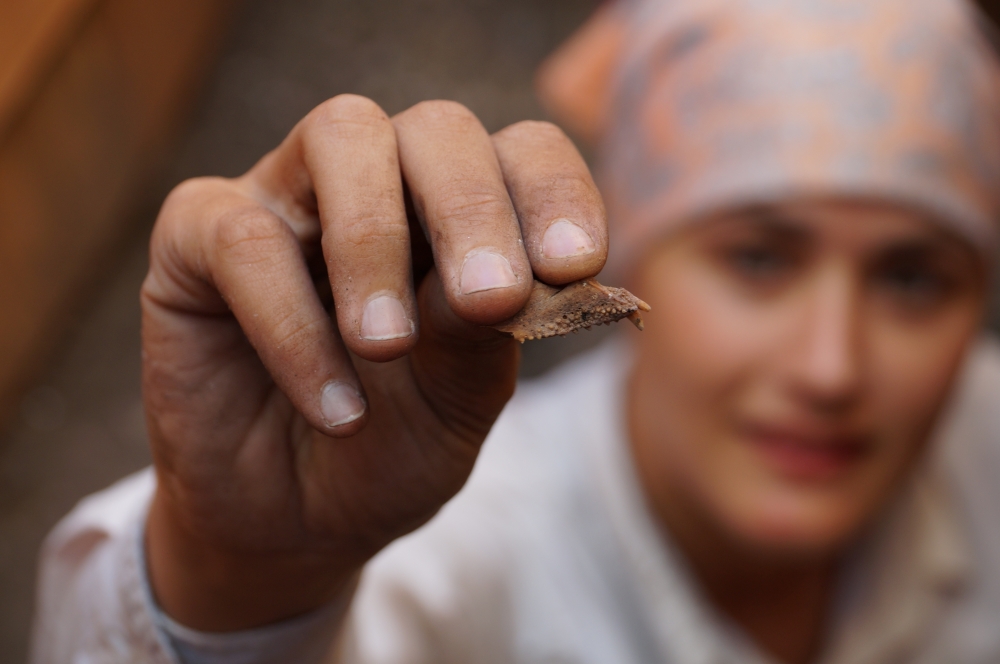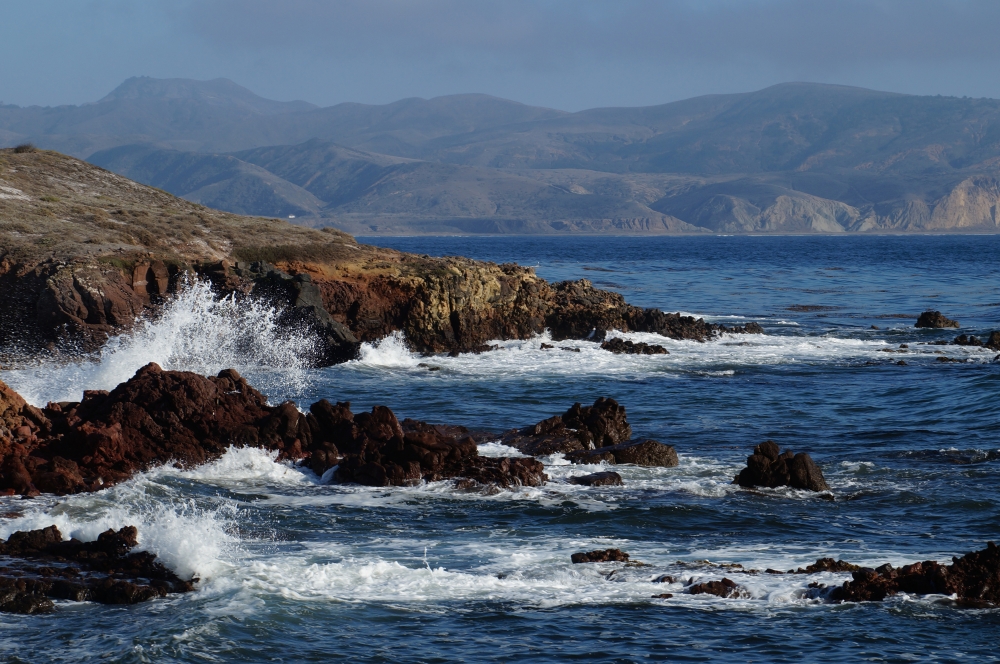Treasure Island


Island foxes. The world’s largest sea cave. Thousands of years of ancient Chumash civilization preserved in pristine condition, and a sense of how Southern California might have been before all the freeways and tract homes. All of this is contained within the 96 square miles that make up Santa Cruz Island.
Located just over 20 miles off the coast of Southern California, Santa Cruz Island is the largest of the chain known as the Channel Islands.
“It’s like what Southern California looked like a hundred years or more ago,” said Lyndal Laughrin, director of the UC Santa Barbara Santa Cruz Island Reserve (SCIR). Drought-resistant chaparral gives way to pine trees at elevation, endemic manzanitas spread across the landscape and native grasses are returning after decades of ranching and wine making. The scenery is vast and breathtaking, virtually unchanged from what the native Chumash witnessed in their millennia of existence on the island. The island’s geography makes it a strategic place to study a diversity of sea-dwelling life forms. Meanwhile, endemic species, cut off from their mainland counterparts for generations, have taken different evolutionary routes, earning the island comparisons to the famed Galapagos.
It never gets old for Laughrin, who has been the reserve’s director since its establishment in 1964. The UCSB-trained vertebrate zoologist is intimate with all of the island’s idiosyncrasies, from the shift in the species of trees from canyons to peaks, to the way the soil changes color and composition from one side of the island to the other, to how the mist rolls in when the sun sets. He has traversed the bumpy dirt roads that crisscross the island on foot, via motor vehicles and by horseback.
For the past 50 years, Laughrin has been the go-to person on the island as the SCIR evolved from an idea born out of a summer field geology class to the modest field station that hosts researchers year-round. As the operation has grown and changed, Laughrin has grown and changed with it, picking up many roles along the way: scientist, cowhand, tour guide, teacher, island historian, conservationist, repairman and host, just to name a few.
“To make it work, you sort of learn by doing eventually, or do without,” he said.
UCSB has benefitted enormously with Laughrin at the helm, but as he approaches full retirement — he’s already semi-retired — the university faces the challenge of filling his big shoes.
“Lyndal Laughrin is the heart and soul of the Santa Cruz Island field station,” said Patricia Holden, director of the UCSB Reserve System and professor at the Bren School of Environmental Science & Management. Laughrin has been the anchor for the field station, navigating it through the island’s transition from an agricultural family venture to a semi-public entity, representing the interests of the university to both the National Park Service (25 percent owner of the island) and The Nature Conservancy (75 percent).
Countless researchers owe their careers — at least in part — to Santa Cruz Island.
“This was really my dream site,” said anthropologist Lynn Gamble. She fell in love with the island as a grad student decades ago, when she first discovered the wealth of cultural resources left there by thousands of years of Chumash presence. Relatively undisturbed and benefiting from the absence of gophers on the island, middens and house depressions — like the ones at the site dubbed “El Monton” on the western part of the island — reveal intimate details the foods these indigenous Americans ate and about the tools they used. The evidence of one food source or another also presents clues about the climate and the environment of the Holocene epoch, during which they thrived on the island.
“I remember Lyndal’s enthusiasm about the island foxes,” said Gamble, recalling her first interactions with Laughrin as she tried to get rolling on her dissertation. Out of scholarly and professional courtesy, she deferred to another more senior researcher doing work at the island, but she jumped at the chance to conduct research there decades later. And, like before, Laughrin was ready to help out.
“He had this wealth of information, and in the many years since then, it has just gotten deeper,” she said.
While many have conducted their research successfully through the field station, the adequacy of the facilities is now becoming an issue. With an increasing number of researchers and visitors requesting permission to access the reserve, interests compete for the limited lab space and classroom area, which are outfitted with only the most basic of equipment. The original building as well as subsequent additions to the small complex are beginning to show their age.
Laughrin envisions more space, better facilities and even more manpower to run the field station when it comes time for him to reluctantly leave for the mainland, but it’s not just for the researchers. It’s also for the kids, especially the ones who have never seen wide open, untouched spaces or slept in a place that gets completely dark and quiet at night, where smartphones and tablets and MP3 players yield to sunsets and birdsong and the occasional island fox. In his not-so-secret plan, the success of the half century of his work lies not just in the Ph.D.s that come out of visits to the field station but also from the wide-eyed wonder of the youngsters who step out into this time capsule of an island, and learn firsthand why it’s so special.
“Really when you think about the Earth, our future, what you really want to do is capture the young people,” he said, “get them really invested in the idea of the importance of the natural environment. Having this place accessible to K-12 people, especially the lower grades, it’s just life-transforming.”



